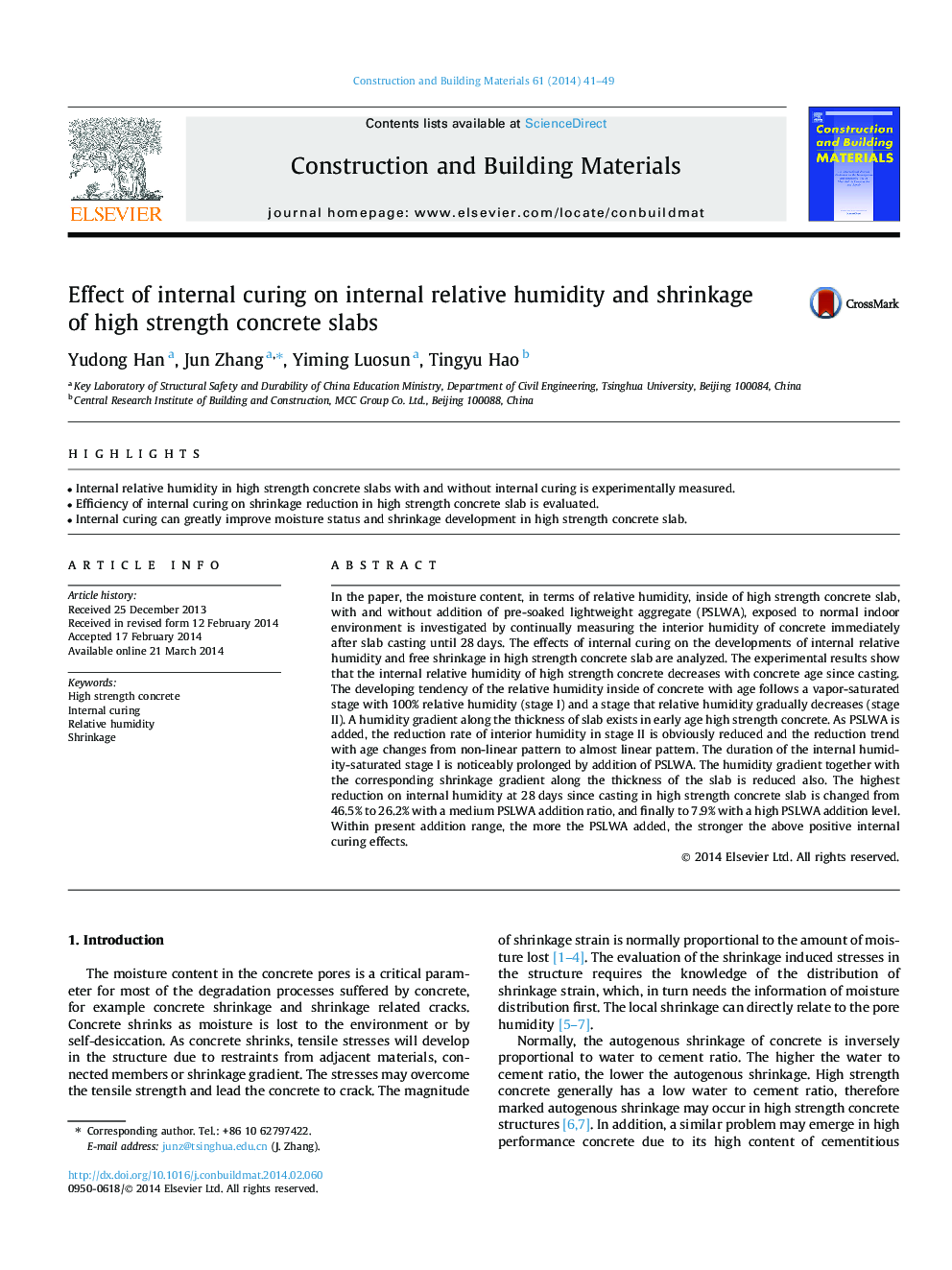| Article ID | Journal | Published Year | Pages | File Type |
|---|---|---|---|---|
| 257636 | Construction and Building Materials | 2014 | 9 Pages |
•Internal relative humidity in high strength concrete slabs with and without internal curing is experimentally measured.•Efficiency of internal curing on shrinkage reduction in high strength concrete slab is evaluated.•Internal curing can greatly improve moisture status and shrinkage development in high strength concrete slab.
In the paper, the moisture content, in terms of relative humidity, inside of high strength concrete slab, with and without addition of pre-soaked lightweight aggregate (PSLWA), exposed to normal indoor environment is investigated by continually measuring the interior humidity of concrete immediately after slab casting until 28 days. The effects of internal curing on the developments of internal relative humidity and free shrinkage in high strength concrete slab are analyzed. The experimental results show that the internal relative humidity of high strength concrete decreases with concrete age since casting. The developing tendency of the relative humidity inside of concrete with age follows a vapor-saturated stage with 100% relative humidity (stage I) and a stage that relative humidity gradually decreases (stage II). A humidity gradient along the thickness of slab exists in early age high strength concrete. As PSLWA is added, the reduction rate of interior humidity in stage II is obviously reduced and the reduction trend with age changes from non-linear pattern to almost linear pattern. The duration of the internal humidity-saturated stage I is noticeably prolonged by addition of PSLWA. The humidity gradient together with the corresponding shrinkage gradient along the thickness of the slab is reduced also. The highest reduction on internal humidity at 28 days since casting in high strength concrete slab is changed from 46.5% to 26.2% with a medium PSLWA addition ratio, and finally to 7.9% with a high PSLWA addition level. Within present addition range, the more the PSLWA added, the stronger the above positive internal curing effects.
